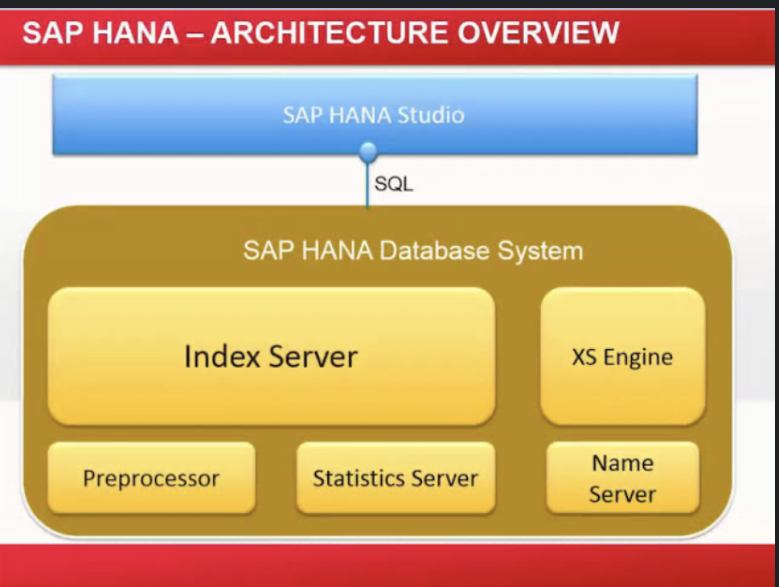Both cloud as well as on-premises storage of relational column-based data is made possible with SAP HANA. If you’re looking for a database that can handle advanced analytics, geographic data collection, and ETL procedures, go no further than SAP HANA. You can learn more in detail sbout it with the best SAP HANA training.
Here we’ll go over the ins and outs of SAP HANA, covering its architecture, storage kinds, as well as cloud alternatives. Azure NetApp Files may assist decrease testing and development overhead expenses and accelerate SAP HANA deployments, as we’ll demonstrate.
Table of contents
- How Does SAP HANA Work?
- Subsystems of the SAP HANA Framework
- Types of SAP HANA Storage
- On-Demand SAP HANA
- SAP HANA Framework Using Azure NetApp Documents
- Conclusion

Image source google
How Does SAP HANA Work?
For those in the know, SAP HANA is just another name for HANA, an RDBMS. With its in-memory store and columnar design, it outperforms conventional persistent storage databases in terms of data access as well as processing speed. Both on-premises and cloud deployments of HANA are possible.
Using SAP HANA, you are able to:
- Archive and access application information
- Predict and analyze data streams using sophisticated analytics
- Analyze geographical data
- Run ETL procedures, which stand for extract, transform, and load.
Subsystems of the SAP HANA Framework
These are the main parts of the SAP HANA architecture.
● Libraries for HANA clients
Applications can integrate with data engines by importing HANA client libraries. Libraries such as the Predictive Analytics Library (PAL) as well as the Business Function Library (BFL) are examples of what is accessible.
● Index server for SAP HANA
Data storage and processing primarily occur on the index server. There are several parts to it, such as:
- Validates user sessions and creates them; manages transactions. The management keeps tabs on the link status, particularly isolation levels as well as transaction states, after sessions are generated. According to user profiles, it also verifies and authorises users.
- Processing entering SQL or MDX statements is the job of the SQL/MDX processor.
- Whichever is your setup, data engines can include more than one engine. One such tool is a relational data engine, which controls data stored in memory and oversees the connections among tables.
- An engine for planning that, in response to user requests, aggregates data and optimizes performance via parallel processing; it also generates SQL processing models.
- A computational engine that takes user-supplied data and uses it to create object-specific computational models.
- Data engine outputs are saved in the repository.
- Database transactions are guaranteed to be permanent and atomic by the persistence layer. It keeps track of transactions as well as is in charge of saving as well as serving their committed states.
What is the name server:
Your HANA system’s architecture is stored on the name server. It finds out wherever data is kept and which parts of the system are now active.
What is the preprocessor server:
For the index servers to evaluate and retrieve text data in response to user queries, the preprocessor server—a component of the SAP HANA architecture—is utilized.
What is the statistical server:
It is the job of the statistics server to monitor and assess how well HANA is doing. It keeps track of the system’s overall performance as well as keeps tabs on how resources are allocated and used.
XS engine for SAP HANA
You can link application clients based on HTML or Java to HANA via HTTP or HTTPS with the additional XS engine. For exposed clients, it converts HANA’s persistence strategy into a consumption architecture.
Updated components
A wide range of components utilized for updates are also included in HANA systems. Some examples are:
- agents that host SAP systems
- diagnostic agent for SAP Solution Manager
- Managing Software Updates in SAP HANA Studio
Types of SAP HANA Storage
In order to handle your workloads, HANA systems require a variety of storage formats. The data as well as configurations you use with the database define the type chosen. You can manually specify storage if needed, but HANA usually figures out the right kind automatically.
Column storage
The HANA data storage type that is defaulted to be column storage. Column storage allows you to access certain columns inside a data row for reading or writing purposes, rather than accessing the full row at once. This is one way in which HANA speeds up the processing of data and retrieval.
What you can do using column-based storage is:
- Perform real-time analysis on application data
- Data in tables with several rows can be efficiently compressed.
- Get data using full-text indexes
- Make use of very efficient data markers
Rows storage
The conventional approach to database storage is row-base storage. Due to its slowness and the fact that column-based storage can usually accomplish the same goals, it is hardly employed in HANA. Two cases where this isn’t the case are when using global temporary databases or when repeatedly accessing individual entries from your database are required.
Delta and main storage
There are two sections of random access memory (RAM) in the HANA system: the main part and the delta section. Transaction data is stored in the primary storage. Pending or ongoing transactions are stored in delta storage.
Shared Storage with SAP HANA for Clustered Implementations
You can use shared storage resources or distinct storage with failover reassignment when deploying HANA in a cluster. Using external storage is functionally equivalent to using local storage on just one host or system. The main distinction is that in the event of an active host failure, the standby hosts are given permission to use the local storage of the failed host.
Through protocols like IBM General Parallel File System (GPFS) or Network File System (NFS), your hosts can access a single storage resource when you use shared storage. Although the logs and data are organized by host, all hosts have visibility and access to file storage and data. Assuming all hosts are functioning normally, they will individually write to their own data and log files. In the event that a live host goes down, a backup host will pick up the files from the down host and keep running.
On-Demand SAP HANA
You can host SAP HANA in the clouds in a few different ways. You may utilize SAP HANA Enterprise Cloud if you wish to use HANA that is hosted by SAP. This service is private and administered using the Cloud Foundry platform.
You also have the option of hosting it on one of the three main cloud services. Here is the support information for your system if you want to go this route:
Azure and SAP HANA— Either physical servers or virtual machines (VMs) certified by SAP can be used for hosting. Your current SAP license can be transferred or the system can be licensed through Microsoft in Azure.
Amazon Web Services (AWS) with SAP HANA— You use a mix of Elastic Block Storage (EBS), Virtual Private Cloud (VPC), and EC2 to host your system. You can choose between conventional SAP-certified instances as well as memory-optimized ones. Bring a separate license if you want to use AWS.
With SAP HANA on GCP— SAP-certified virtual machines host your system. A single-host or multi-host architecture, as well as dynamic storage tiering, are configuration options for your deployment. Bring a separate license if you want to use GCP.
SAP HANA Framework Using Azure NetApp Documents
Developed by Microsoft and based on NetApp technology, Azure NetApp Files adds file features to Azure, making it more suitable for use with essential business applications.
With Azure NetApp Files, an enterprise-grade storage and management of data solution for Azure, you can effortlessly migrate all your file-based apps to the cloud while handling your workloads with simplicity.
Businesses facing performance and availability issues when migrating mission-critical apps to the cloud can find solutions with Azure NetApp Files. This includes workloads such as HPC, SAP, Linux, Oracle and SQL Server, Windows Virtual Desktop, and many more.
Conclusion
If you’re looking to speed up SAP HANA installations, cut costs on development and testing, and make your business operations more agile—Azure NetApp Files are the way to go.
Author Bio : Madhavi Gundavajyala is a Content contributor at Mindmajix.com. She is passionate about writing articles and blogs on trending technologies, project management topics. She is well-versed on AI & Machine Learning, Big data, IoT, Blockchain, STLC, Java, Python, Apache technologies, Databases.
